While Western leaders and media endlessly talk about sustainability, climate crisis, and the urgent need to transition to a green economy, it is China who is succeeding in and dominating all the renewable energy sectors. And it’s not just that China is #1 in solar energy, wind power, electric vehicles etc. What is astounding is China’s absolute domination of market share in all these fields in every aspect — manufacturing, sales, spending, patents and so on. Moreover, in manufacturing, China’s control of the entire supply chain is extraordinarily impressive or shocking, depending on your perspective.
Just a decade ago, China was an insignificant player in all these areas. In 2012, China’s share of global electric car sales was minuscule; and Chinese solar companies were failing in spite of government’s vast spending.
Fast forward ten years, the results are astonishing. For example, the number of EV cars in China grew from 12,000 to 12 million between 2012 and 2022 — a staggering thousand-fold growth!
Let’s take a look at the individual sectors now.
Big Picture
The number one factor is, of course, the Chinese government’s willingness to back up their commitment with money. China has spent more than $1 trillion (!) over the last decade on global energy transition and now accounts for 40% of global spending.
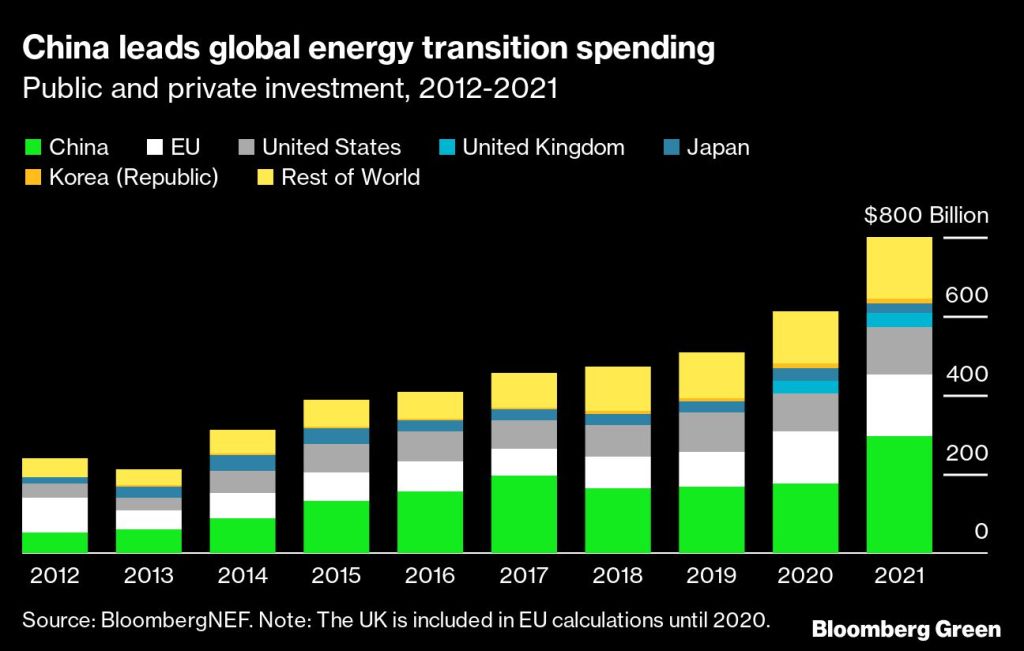
Electric Cars
From 2016 on, China has accounted for 50% of annual EV (car) sales around the world.
Looking at the cumulative electric car sales (that is, total EV in use), China accounts for just under 50% of the world’s total.

…
In 2021, China manufactured and sold 3 million electric cars. In 2022, the sales was expected to reach 6 million, accounting for way more than half of global sales!
Eventually, China sold whopping 6.5 million electric cars (BEV + PHEV) in 2022.
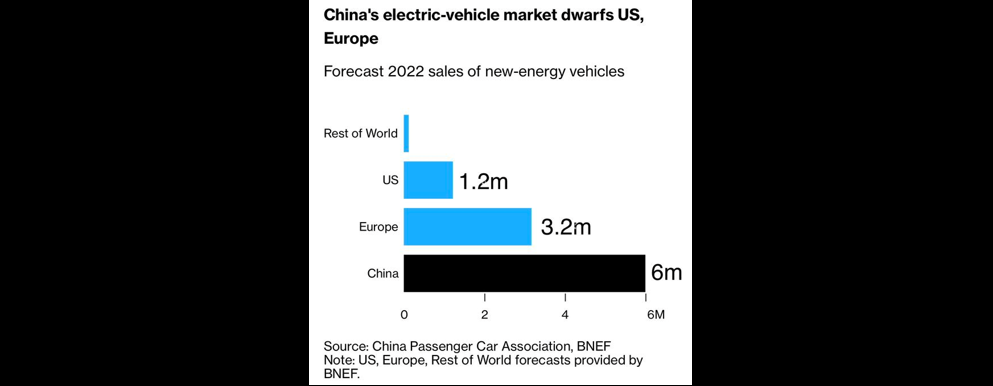
…
Until 2014, the US was ahead of China in manufacturing and sales of electric cars. However, now in the first half of 2022, China’s sales were about six times larger than that in the U.S. — 2.4 million versus just over 400,000. China is also 2x Europe in electric car sales.
Also astonishing is China’s rapid transition from conventional (ICE) cars to electric cars. In 2022, electric cars — pure battery (BEV) and plug-in hybrid (PHEV) — accounted for 28% of all new car sales. In big cities like Shanghai, 45% of new cars are electric. Incredible!
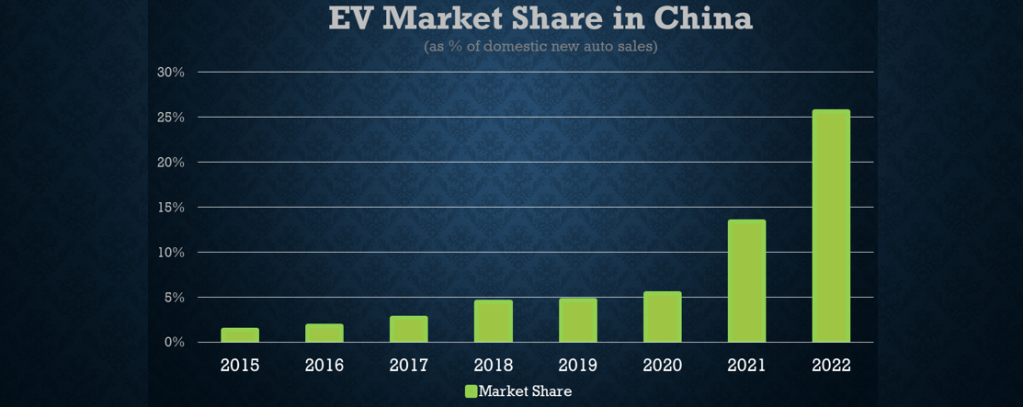
There’s another development that a lot of people — especially Americans — are not aware of: Growth of quality Chinese EV brands. Globally, many of the top EV brands are Chinese, Tesla being the one exception.
BYD, which sells battery EV as well as plug-in hybrids, has surpassed Tesla as the #1 brand. Here are the world’s top plug-in brands in 2022 (Jan-Oct):
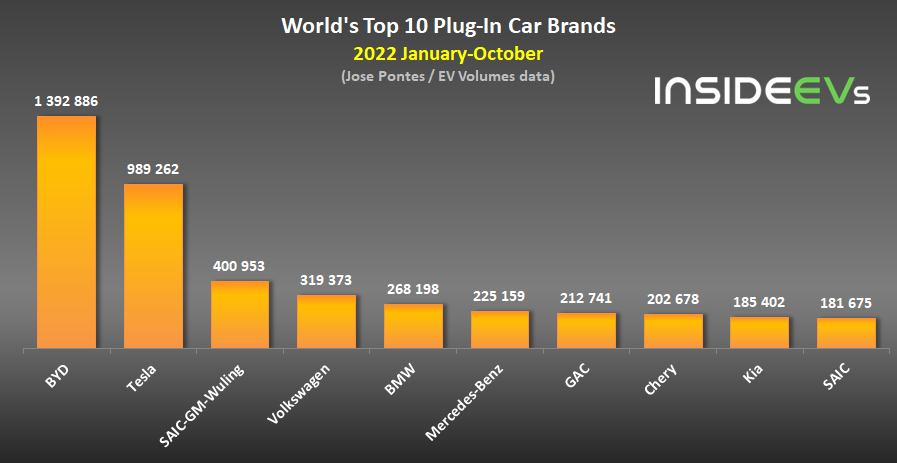
The little inexpensive Wuling (less than $5000) is also a big seller. Next come the German brands — Volkswagen, BMW and Mercedes-Benz. Other Chinese brands like Chery, GAC and SAIC also show up in the top 10 list. Basically, 5 out of the top 10 electric cars in the world are Chinese brands!
For those thinking that Chinese cars must be of low quality, here are some shocking facts:
- The world’s biggest exporter of electric cars is … China! It has a market share of 60% of global EV exports!
- Chinese brands have captured 6% of the EV market in Europe!
While BYD leads in units sold, other Chinese brands like NIO and XPeng are also getting into the European market.
In 2022, China will export 500,000 electric cars, most of them going to Europe. (Note that these include Tesla’s which are made in China).

Looking at all cars, China will export almost 3 million cars this year. In 2022, China has already surpassed Germany as the world’s 2nd largest auto exporter. Note that these exported cars include a lot of foreign brands which operate factories in China.
China also exports a lot of auto parts all over the world — about twice as much in value as the cars themselves. As Bloomberg succinctly put it, China is becoming a car export powerhouse.
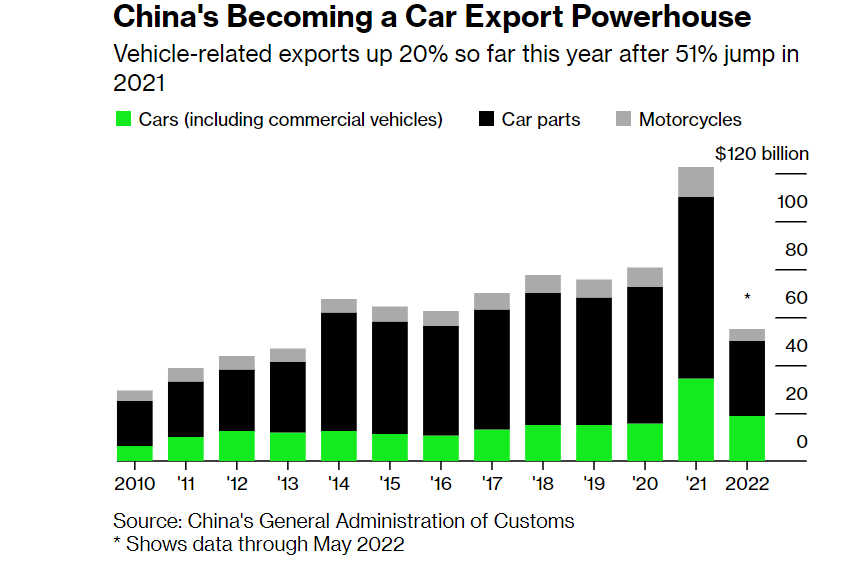
Batteries
The most valuable part in an electric car is the battery. And it should not be surprising by now that Chinese companies dominate the battery market. Chinese companies CATL and BYD are now the top 2 companies in the world. In total, Chinese companies have captured about two-thirds of the global EV battery market share.
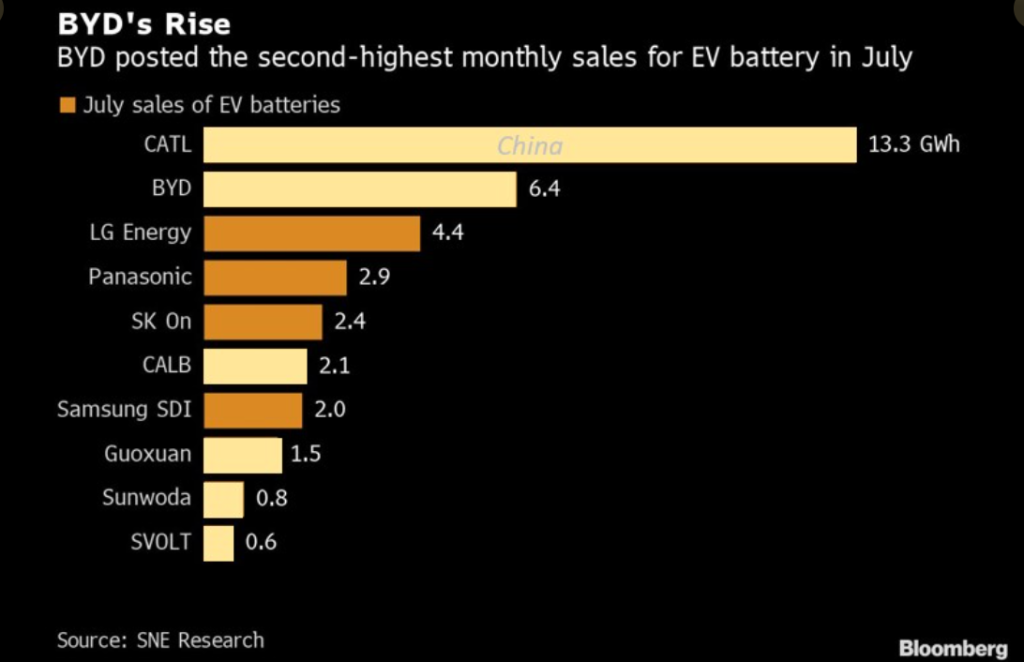
Going further deep into the supply chain, China also dominates the processing of upstream minerals and manufacturing of components vital to the EV industry — for example, Lithium, Nickel, Cobalt, cell components etc. China controls 80% of the chemicals needed to make advanced batteries. And similarly, China also is the dominant player in rare earth minerals — both mining and processing — which are also crucial for electric vehicles.
So, what else do you need to be a successful EV market? Ah, yes, charging stations. Without plentiful of chargers, even the best salesman cannot sell electric cars. Thus, the Chinese government subsidized and helped private enterprises with the installation of charging poles everywhere. By the end of 2022, there were more than 1.8 million public charging piles (also “poles” or “stations”) in China. There are also more private chargers at homes — 3.4 million by 2022. Companies like BYD even hand out free EV chargers for home install.
Check out the chart below for China’s astonishing growth in public chargers. China is more than 10x USA and 3x Europe.
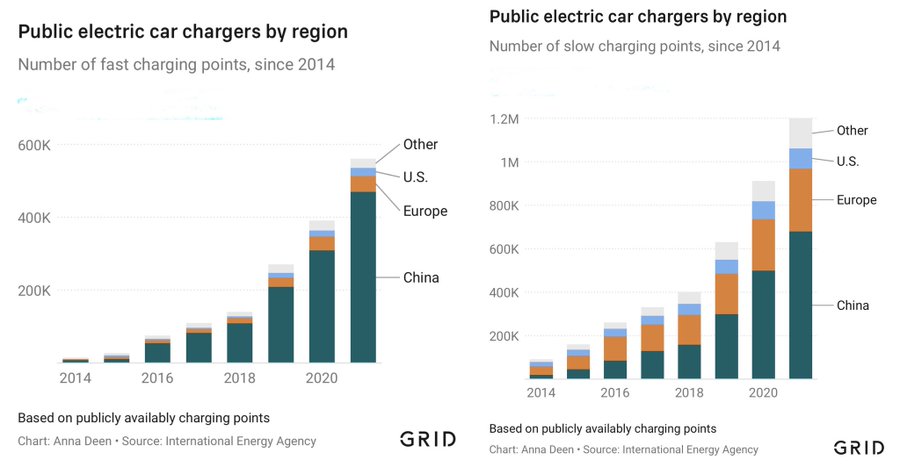
(The number of public charging ports in the United States of America is not only 1/10th that of China, but they are also unevenly distributed, being mostly concentrated in California. This hinders the adoption of electric cars in the US).
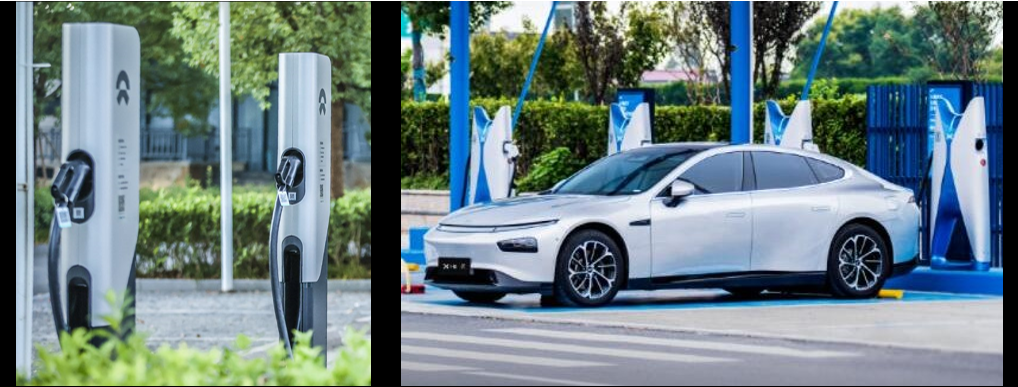
And many Chinese EV cars like NIO are also integrating artificial intelligence (AI) for self-driving. These companies can leverage other Chinese companies like Baidu which have been making tremendous progress in autonomous vehicles.
Below is a short video of a completely driver-less “robotaxi”, which is available in Chinese cities like Wuhan and Chongqing:
Conclusion
In 2022, China’s EV sales was about 6.8 million — more than 2x Europe and 6x the US. A decade ago, China was a blip. Below is a chart of electric car sales in China, USA and Europe from 2013 to 2022.
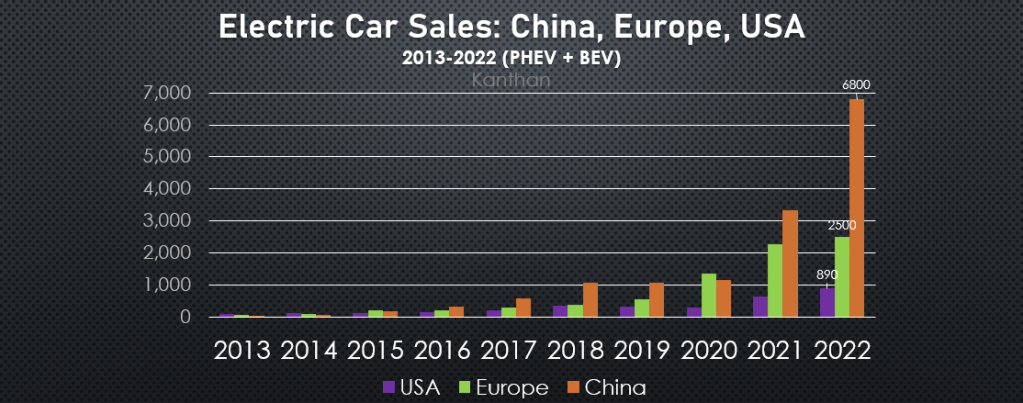
…
How did it happen?
China’s success in EV industry was due to confluence of many reasons: Government subsidies and mandates, industrial policies, long-term planning, intense competition (with 100+ EV companies), mastery of supply chain, robust infrastructure, automation and robots, Chinese hard work etc. The success is also a testimony to China’s “industrial socialism” — a partnership of government and private enterprises. China’s state-owned enterprises also play a key role in the success of the EV industry.
Of course, China’s expertise in manufacturing is also indispensable in churning out millions of electric cars every year. And it’s not just about “cheap labor” anymore. Tesla’s Gigafactory in Shanghai will soon be able to manufacture 1 million vehicles a year. And that is made possible by a hi-tech factory that employs a lot of robots. Here’s a video clip from that factory:
Thanks to all these holistic and symbiotic factors, China is world’s #1 in manufacturing, sales, and exports of electric cars.
In the next blog post, we will cover China’s supremacy in renewable energy.
-Chris Kanthan
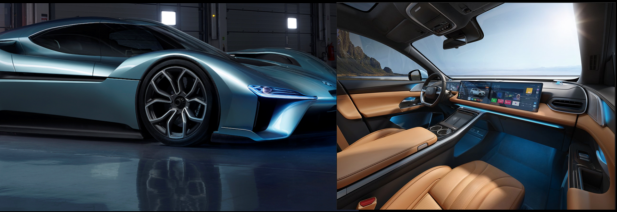
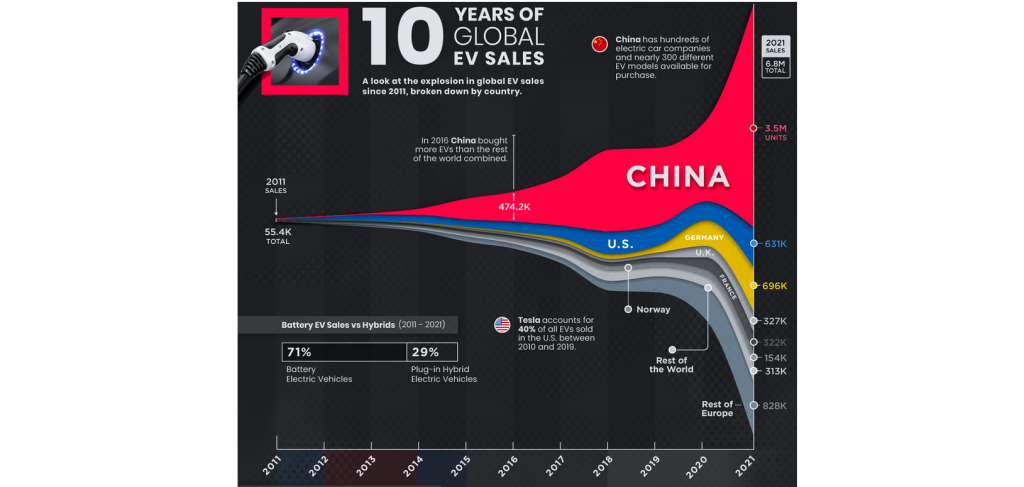

In China, action speaks louder than words.
LikeLiked by 1 person